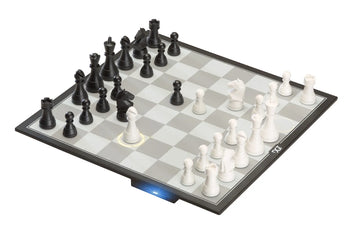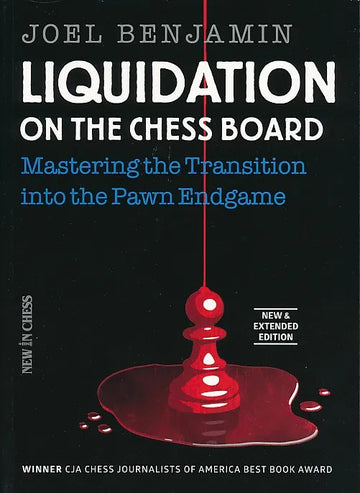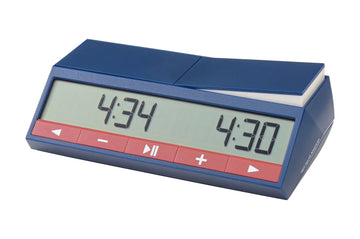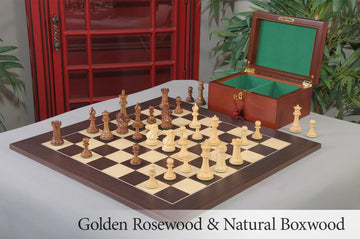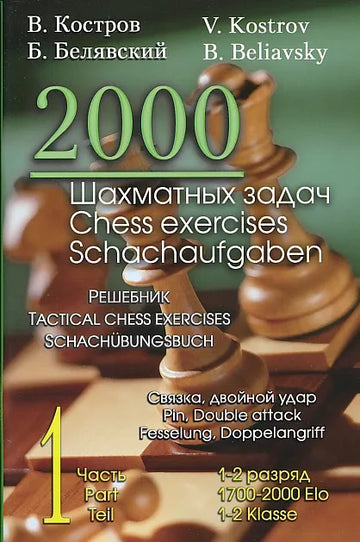Zugzwang: How to Freeze Your Opponent's Position
Zugzwang is not the most well-known chess concept, but it is one that can instantly increase the amount of games you win.
The simple idea behind zugzwang is contrary to how beginners and many intermediates think about chess positions. If you can grasp the concept and know when to use it in your games, you can find the key to many endgames. While mostly an endgame technique, zugzwang also has lessons for chess in general.
In this article, we will explain the concept, give endgame and middlegame examples for different levels, and explore how it can affect your thinking throughout a game of chess.

What Does Zugzwang Mean?
Zugzwang literarlly means the compulsion to move in German. In chess, zugzwang refers to when you have no good moves to make, so you are forced to make a bad move. Often this move will make your position decisively worse.
To put your opponent at a disadvantage using zugzwang is to take away the possibility for them to play any good moves, leaving them with an option that can only benefit your position.
Usually, zugzwang situations are possible only when there are relatively few possible moves available; in other words, in simplified endgames. As such, zugzwang is largely understood as an endgame concept. However, there are instances (and famous examples) where you can use zugzwang in the middlegame.
Zugzwang is an important concept in chess. Understanding it can help you consider your opponent’s moves more carefully, allowing you to close down their position.
How to Put Your Opponent in Zugzwang
So how does zugzwang work?
To create a zugzwang position you need to minimize the amount of good moves your opponent can make, freezing their position. Imagine there are only a few pieces on the board, and a single piece is holding your opponent's position together. What happens if they have no option but to move that piece?
The first step to creating this kind of situation is identifying the kind of position in which it is possible. Usually, it is in the endgame and often with very few pieces left on the board. In the next section, we will see some endgame examples you are likely familiar with. The next step is to calculate moves that will close down your opponent’s options. This will require your regular calculation skills, but also a special focus on your opponent's possible moves and the squares your pieces control. The final step is to make the forcing or waiting move that takes away their last good option.
Voila! You have won a game by forcing your opponent to move through the magic of zugzwang.
Of course, it’s more difficult than it sounds. In the next section, we look at the most common zugzwang situations you can encounter in simplified, beginner endgames and more complex examples.
Endgame Examples
Some of the most common endgames rely on zugzwang to convert. On the other hand, some of the most dastardly chess puzzles are also based on zugzwang – we’ll look at one challenging example at the end.
Let’s start with simple endgame scenarios.
Simplified Endgames
The most common situation for zugzwang to arrive is the endgame. In particular, when there are very few pieces on the board. In these simple positions, forcing your opponent's king away from vulnerable pawns is often how you win. Zugzwang is a key concept here and is important to converting many endgames that every beginner should know.
Related: 100 Endgame Studies You Must Know
King and Pawns
You should always be aware of your opponent's good moves and their bad ones. In simple endgames, this can be quite straightforward. For example, if there are only kings and pawns on the board, a bad move would leave pawns unprotected or allow the king to infiltrate. Often, to win you need to force the king to make a bad move by limiting its available squares. In other words, putting your opponent in zugzwang.
In this beginner endgame position, White needs to promote a pawn and Black is trying to prevent it.

Black is in zugzwang: they must move to one side or the other, allowing White to promote its pawn and win the game.
In games wherein one player has a king and the other has a king and a pawn, this is an important position to understand. In many instances, the defender could block the pawn and claim a draw via repetition or stalemate.
The same is true when pawns create a blockade.

In this position, if it's White’s move the game is drawn, but if it's Black’s move White wins. This is because Black is in Zugzwang. The black king can only move backward, allowing White to infiltrate the position.
Related: Which Mistakes Beginner Chess Players Make
Rook and Kings
Zugzwang is used to checkmate with a king and a rook, which is a very common pattern that beginners should master.

The idea is to force the king to the back rank. By using the rook to control a rank or file, you can keep the king pinned on one side of the board. Next, you align the kings opposite each other; this is achieved by chasing the king along the rank or file until it has to double back on itself. When the kings are opposite, you can check the king with the rook and force it into a smaller section of the board (see image). Finally, when it is on the back rank, the pattern is repeated with a checkmate.
Complex Endgames
More complex examples arise when there are more pieces on the board. Knights and bishops are very mobile, so taking away all of their good moves can be tricky. However, there are still plenty of opportunities to use zugzwang.

In this example, Black is in zugzwang despite having many possible moves. Any pawn advances will lose a pawn, the knight is pinned to the king and if the king moves the knight is captured with an additional pawn. Black must move in a way that gives up a pawn and loses the game.

In this example, White has found a tricky move and put Black in zugzwang. They do not capture the pawn on h2, which would allow Black to check with the bishop and capture the knight. Instead, they realize that black has no good moves. If Black:
- Captures the knight, the passed pawn cannot be captured by the king or the bishop, because the king blocks the bishop.
- Similarly, it cannot move the king to b4 or c4.
- The bishop also has no good squares. Any of the unprotected squares would allow a fork.
Black is forced to capture the knight and allow white to queen their pawn.
Sometimes when your opponent has very few moves you can sacrifice pieces to find a checkmate. Look at this solution to a puzzle.

White plays a brilliant move by sacrificing the rook. Black has only one legal move available: to capture the rook, allowing white to deliver an incredible checkmate with b4#.
Related: Chess Studies and Endgames
Puzzle
Practicing zugzwang puzzles is a great way to get to grips with the concepts. Here is a tricky one to test your abilities. Check the end of the article for the solution.

Related: The Chess Puzzle Book
Middlegame Example
Zugzwang can be a tricky thing to create in the endgame. In the middlegame, it is rare, even at the highest level. Nevertheless, zugzwang is a situation found in chess at every stage of the game.
Staying aware of your opponent’s possible moves, especially in closed positions, can present opportunities for zugzwang in the middlegame.
Here is an example from the 1974 USSR championships: Mikhail Podgaets vs. Mark Dvoretsky.

As you can see, most of the pawns and pieces are still on the board, but White simply has no good moves. Capturing the rook leads to checkmate in one; any other queen move loses the queen. The bishop is trapped and if the rook moves the pawn on f2 is overwhelmed.
Black simply has to play waiting moves until White is forced to eventually make one of these losing moves.
What Zugzwang Means for Your Chess Game
To create zugzwang situations we follow one of the great, simple principles in chess: figure out what your opponent wants to do and stop it. You can win games by freezing your opponent's position.
Beyond pure zugzwang, concepts of prophylaxis and considering your opponent’s intentions and possible moves are great study topics that can quickly improve your chess. The underlying idea is that every move on a chessboard gives you new things to consider.
By studying zugzwang you will take one step closer to understanding how to assess a position in chess. Simply by looking for opportunities to force your opponent to make a bad move, you will win games that could have been drawn or lost.
Puzzle Solution
The puzzle is solved by finding the forcing moves that put black in zugzwang giving them no option, but to give up their queen. Winning moves:
- a5 Kb7 2. Nc6 Qa8 3. Kg7 ...

The king cuts off the queen's only escape squares. The black king and pawns have no moves, so black must give up their queen. Even queens can run out of moves!




